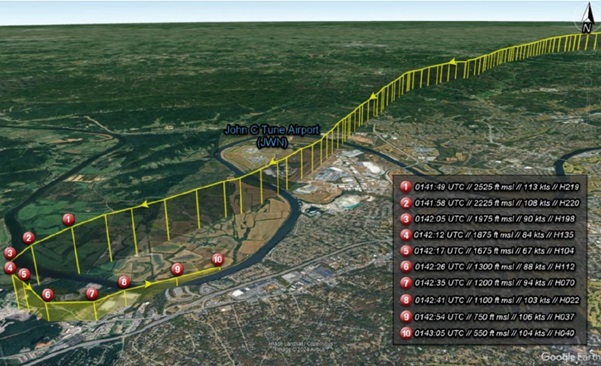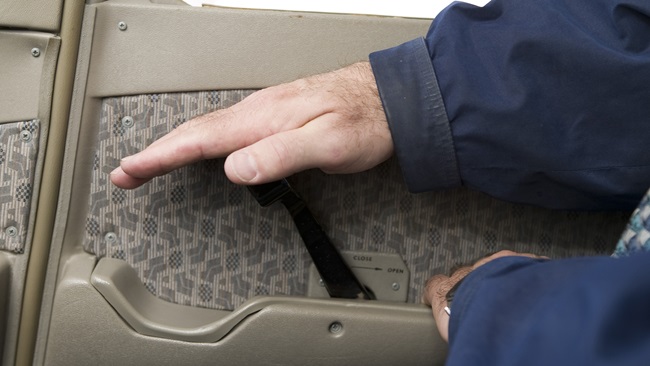Career pilot My first emergency
Flap malfunction nonevent, thankfully

After almost 40 years of flying and more than 18,000 hours, I had the privilege of declaring my first emergency last fall. The Boeing 737 flight from Baltimore/Washington International Thurgood Marshall Airport (BWI) to San Francisco International (SFO) was long but routine. My excellent first officer, Scott, is also a general aviation pilot and airplane owner, so we had plenty to talk about as we droned for hours across this big country.
It was my turn to be the pilot flying while Scott did the pilot monitoring duties. All was well until I called “Flaps thirty, landing checklist.” Scott got to the last item on the checklist.
“Flaps, thir-, uh, we got a problem here.” Sure enough, the left flap indicated 30 and the right indicated 25. I had been hand-flying the approach and didn’t feel anything unusual in the handling of the airplane. No desire to roll or anything unusual. Was it an indication issue or a real problem with the flaps?
By now we were approaching 1,000 feet agl on final for Runway 28R at SFO, and I made the decision to go around and figure out what was going on. Of course, among the first steps of the go-around procedure is to start retracting the flaps. They didn’t move. While this was happening, ATC was peppering us with go-around instructions. Things got really busy really fast, cementing my belief that all airline cockpits should have two pilots just for events like this.
I continued hand-flying the airplane since I didn’t really know what to expect with the flap asymmetry. With the flaps stuck in landing configuration, we had a huge amount of drag to power through the air, making our fuel consumption very high. It also limited our indicated airspeed to about 175 knots. Once we were stabilized and out of the way of the approach corridor, we finally caught our breath and started running the checklist for our abnormal situation. I got the autopilot on and took over radio duties while Scott dove into the checklist.
Since we had a flight control malfunction, I decided we needed to declare an emergency. We had about an hour and 30 minutes of fuel left, even at our high consumption rate. Because of that, I wanted to stay relatively close to the airport, which was IFR. Thankfully, the bay area has a lot of airports to drop in on, so again, I wasn’t too stressed. We let the flight attendants know what was going on and what to expect. We also alerted our airline operations people and made a PA announcement to the passengers.

Once the airplane detects a flap asymmetry, it essentially shuts down the flaps in whatever position they are in. If they are stuck up, there is an electrical alternative method to deploy flaps. In our case, they were basically in a normal landing position, which was good. Flaps-up landings in the 737-900 are very fast, which brings many hazards along with it such as unusual handling characteristics, high energy, hot brakes, and encroachment on the maximum tire speed. Our situation was thankfully almost normal and led me to turn down the offer of fire/rescue equipment.
Scott finished up the checklist, and we agreed it was time to try another approach. We broke out of the clouds around 700 feet and made what was essentially a normal landing on Runway 28R. We were met at the gate by several people, all wanting a verbal debriefing. Most reports were complete before the passengers were off the airplane. Our company pilot representatives, however, had to go through a formal debrief process with us since we were scheduled to fly another flight to Oregon in the next hour.
Since we had a flight control malfunction, I decided we needed to declare an emergency.This makes sense because going through an emergency can be a very distracting event and the airlines want to be sure its pilots are ready to put the event behind them so as to not be distracted from the next flight. Since our emergency was largely a nonevent, Scott and I agreed we were good to go, and we headed off to the next airplane.
I’ve had a few scary moments in airplanes that were far worse than this event, but both occurred on landing where declaring an emergency would be useless. One was an electrical failure, and the other was a near loss of control on an icy runway (see “Career Pilot: A Very Close Call,” June 2017 Flight Training). My hope is that this is the last time I need to declare an emergency. After all those years and hours, I was due for one, I suppose. But if I have another, I hope it’s another nonevent like this one.
Peter A. Bedell is a pilot for a major airline and is co-owner of a Cessna 172 and Beechcraft Baron.


